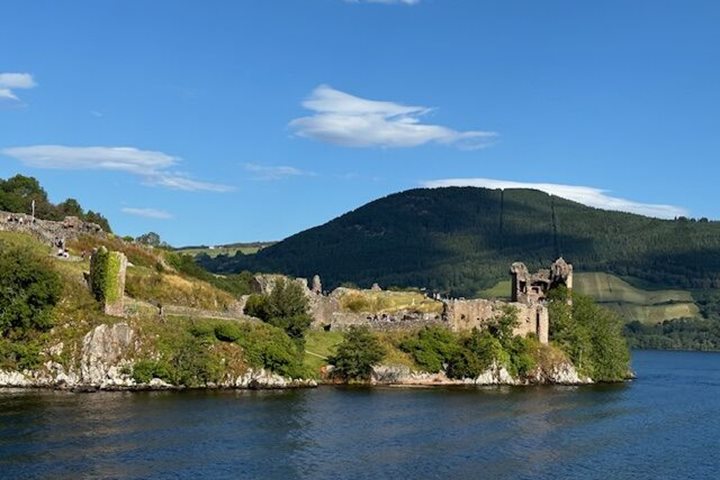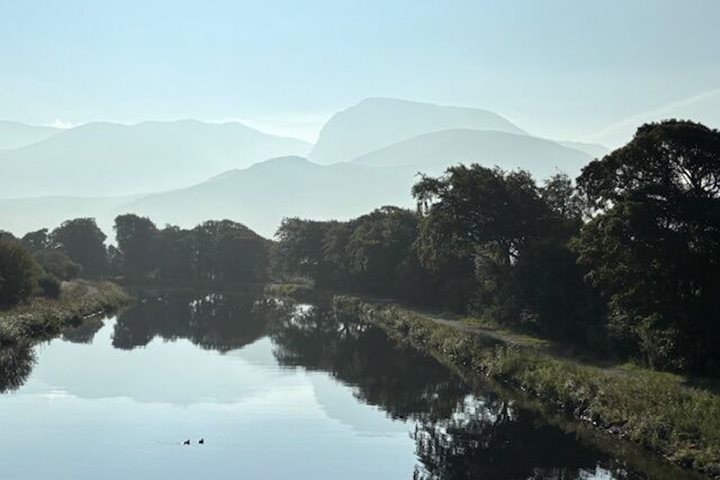All our guests arrived safely in Inverness yesterday to join Lord of the Glens at its secluded berth above the Muirtown Locks. The canal here is high, giving a grandstand view of the city, its many spires and imposing red sandstone castle.
We dedicated the morning to visiting the Clava Cairns site east of Inverness, part of a Neolithic landscape occupied 3-4,000 years ago. Here, beneath huge beech trees, are a series of burial cairns which were aligned towards the setting sun on the winter solstice, a reminder that people have lived in this landscape for millennia. Next stop was the battlefield at Culloden, where, in 1746, the last battle on British soil was fought. The Highland clans supporting the Catholic usurper Bonny Prince Charlie met the government army representing Protestant King George. Outnumbered and with no strategic advantage on the rough, boggy site, the Jacobite army was mown down by the cannon and musket fire of the government forces. This defeat, and the subsequent brutal slaughter of Highlanders that followed, spelt the end of the traditional clan system, and centuries of subjugation and poverty in the glens. A brilliant interpretation centre tells the story vividly.
After lunch we set off up the canal, parallel to the salmon river Ness, past the barley fields which supply the Highland whisky distilleries, and out into Loch Ness, lair of the famous monster. We paused off Urquhart Castle, a dramatic ruin on the shores of the loch where many of the sightings of Nessie have been located. The water here is over 700 feet deep, plenty deep enough to hide a multitude of monsters. Twenty three miles long and one mile wide, the loch holds more water in its icy depths than all the other lakes in Britain. There have been over 100 detailed sightings since 1871 but never definitive proof of a real animal. But fascinated and loyal Nessie fans still turn up in droves, to the delight of the Scottish Tourist Board!
As we ploughed through a sudden rainstorm, Stewart gave an introduction to basic digital photography, which was quickly put into action once the shower had passed, for the loch became a shimmering sheet of platinum, silver and mercury. The wonderful light displays of sunlight and shadow between clouds, mist, mountain and water kept many cameras busy.
Once at Fort Augustus we took immediate advantage of the bright weather and while Lord of the Glens patiently passed a road swing-bridge and climbed five locks, we set off to explore the area. Some took a tour of the town with Steve, others tried their hands at kayaking on the canal and Stewart and Ian led a longer ramble through churchyard, up oak-lined trails into wild woodland, and back via rich meadows and sheep-grazed pasture to the serenity of the canal. There was even time to provide some foreign aid for the Scottish rural community by consuming alcoholic beverages at the canal-side taverns, their number a sure sign of a struggling local economy. It was the least we could do…







